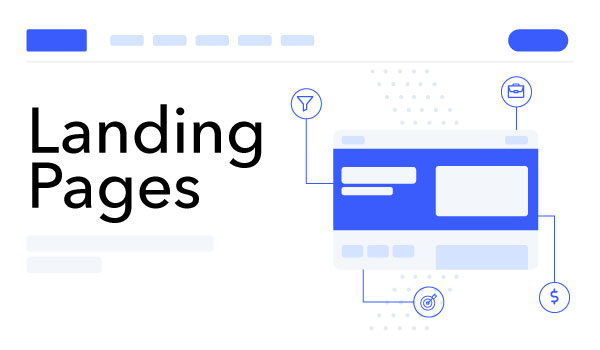ARTICLE SUMMARY
“Google it!” This is the most common phrase the contemporary consumer says before solving a problem or answering a question. A study showed that in 2020, there will be 2.05 billion digital buyers worldwide. It seems like a great opportunity to offer them your products or services, and guarantee your business’ success, right?

“Google it!” This is the most common phrase the contemporary consumer says before solving a problem or answering a question. A study showed that in 2020, there will be 2.05 billion digital buyers worldwide. It seems like a great opportunity to offer them your products or services, and guarantee your business’ success, right?
If you want to be present for this revolution, it’s crucial to create a fantastic digital marketing strategy, composed of elements that will support you to reach your goals. In this article you will learn why using landing pages in your marketing strategy will guarantee a booming conversion rate for your business.
A landing page is different from other web pages on your website because it has all the elements built with a specific goal: converting visitors into leads. Usually, these pages are designed to convey details for only one specific offer. There is no navigation and just one focused call to action (CTA) to avoid distractions and produce the desired conversion.
Picture it: you are receiving tons of visitors to your website, but you aren’t getting them through the next phase of the funnel. You have reasonable page views, but the impacts aren’t exactly reflecting this.
That’s the reason why those specific pages are so important: To put aside elements that may distract your visitors, such as menus, excess of content and other information that aren’t crucial for the user to accomplish an action. The main goal here is to work just with the bare essential, leading to conversions.
Take a look at this landing page example from Unbounce, one of the tools that we use here at Pipefy to build our landing pages. (They have a free trial)
Besides increasing your conversion rate, adding a landing page strategy to your marketing efforts create other fantastic opportunities for your business. Get acquainted with some of the benefits that landing pages can provide to your online marketing strategy.
Improve your sales machine by using landing pages in your marketing strategy, generating leads easily. Your sales team will be provided with an incredible amount of leads who raised their hands as a sign of interest in your product or service. Moreover, landing pages give you a shot at qualifying your leads, so you can score and validate them according to the goals you set.
Depending on what your visitor downloads or what information they provide, you can better determine your contacts. If you work with more than one persona, you can distinguish them through landing page sign-ups.
There are many options out there to get personal information from a potential customer, however, the landing page is the cheapest and simplest one. Can you imagine calling all people who might be interested in your product or service? The amount of time this would take would be endless, not to mention how much money you would invest chasing the prospects.
Landing pages can efficiently decrease your CAC because they have the power to move your leads through the funnel, transforming them into customers.
It’s really common to feel that you need to thoroughly describe your offer in landing pages. But keep in mind the user will stay on your landing page for just a few seconds, so being objective, clear and concise might be a better strategy. Try to do not distract them and miss the conversion opportunity!
There are some essential elements that high converting landing pages employ to be successful. Make sure you’re using them:
This is the very first thing you visitor is going to see when landing on your page. Your title must be simple, direct and easy to understand. Make it clear what type of content the visitor will get providing their coveted personal information — will it be an ebook, a newsletter or an infographic? It’s really frustrating when you provide information to access valuable content and get slammed with spam instead.
The offer is one of the main elements in your landing page. It’s what will catch your visitor’s eye and encourage them to click on your Facebook ad. People won’t give up their personal information if they don’t identify with the value that you’re offering. Always deliver on your promises.
The form must have an average number of fields, never asking for too much information from your visitor. Before setting the required information, try to understand the most relevant information you need from your visitor. Is that their name, email address, position? Only ask for things you are surely intending to use. Remember, the more information you require, the less likely they will invest the time to fill out the form.
With that information in hand, you can start to build marketing strategies to convert leads into customers. But remember: less is more!
Call to actions indicates the conversion path for your visitor. From a strategic approach, you need to create a killer CTA that is easy to read and visible on the first fold of your landing page. This will enable your visitor to focus all their attention into the action they need to execute. Try to use colors and shapes that help your design stand out.
According to a study made by Eyeview, landing pages with videos converts 80 percent more often! You can use it to demonstrate shortly what your product or service does, or also share customer testimonials.
Add some successful data such as percentage of downloads or customer statements to show that your offer has been consumed and approved by other users. This will help prove your services as credible.
Landing pages are just one of the many solutions available for marketing teams to support their efforts. Like any other department or team, Marketing has unique issues to solve and processes to improve. To deal with that, Lean transformation is needed.









